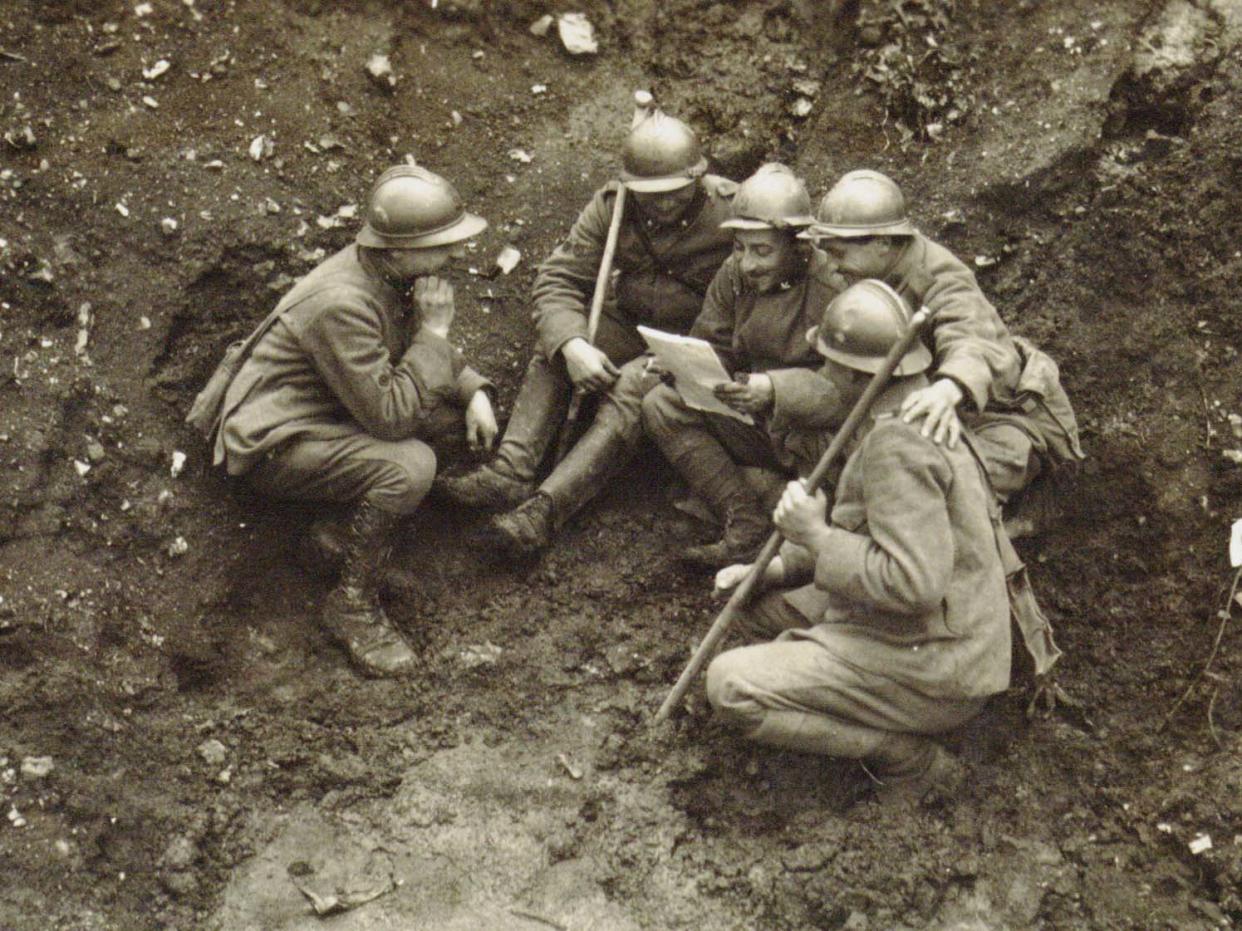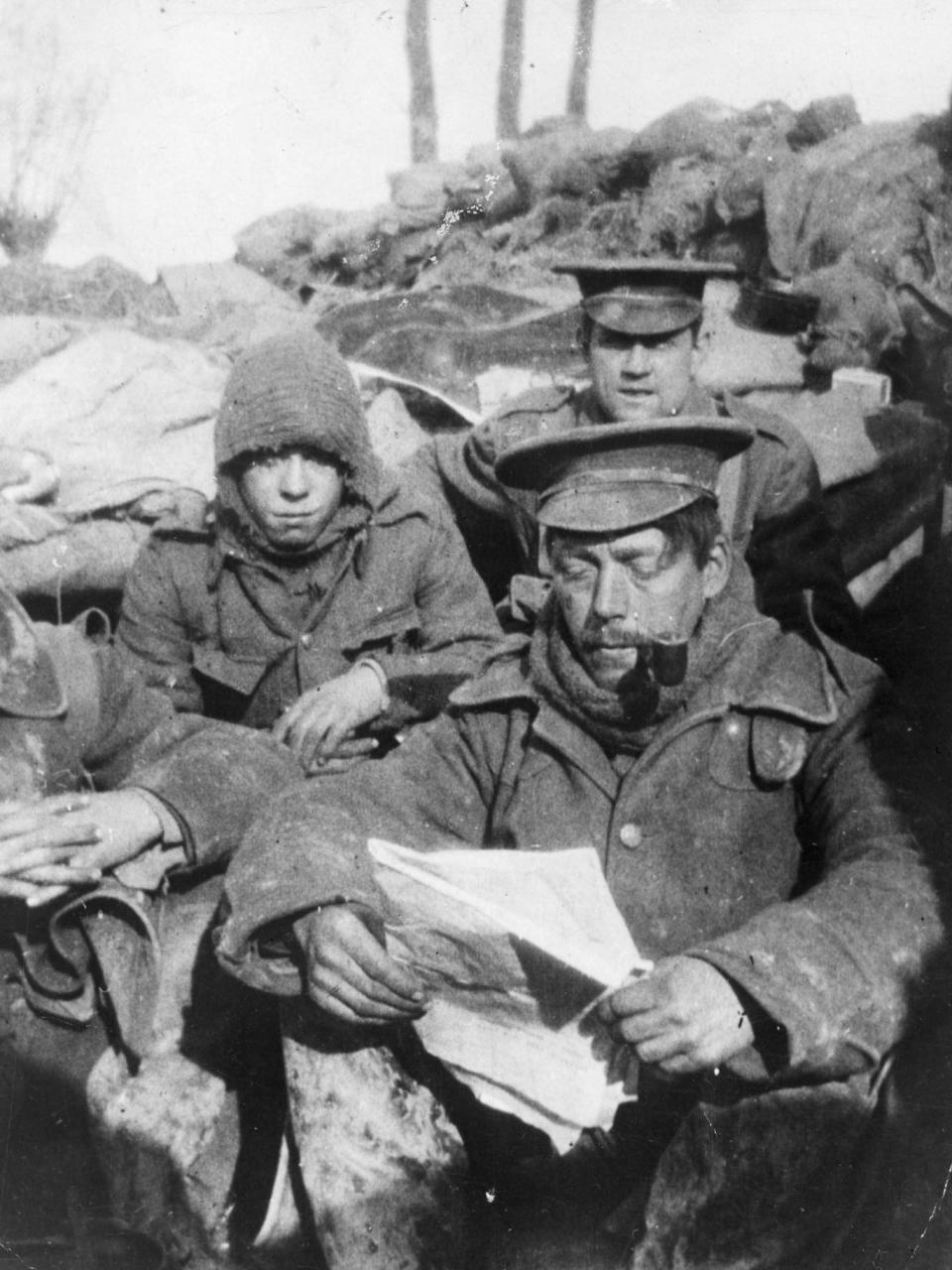The Book List: The literature that gave soldiers solace in the trenches

Quartered Safe Out Here by George MacDonald Fraser
Clausewitz: A Very Short Introduction by Michael Howard
Strategy by Basil H Liddell Hart
Soldiers by Richard Holmes
The Face of Battle by John Keegan
The Prince by Niccolo Machiavelli (edited by George Bull)
Just and Unjust Wars by Michael Walzer
The Centre for Historical Analysis and Conflict Research, the British Army’s think tank, describes itself as “tasked with informing military doctrine and force development and acting as an academic hub for the generation of soldier-scholars”.
One way it does that is to produce reading lists – these are all thorough and extensive, but this shorter one is the Army Professional Reading List, which it describes as providing basic professional building blocks “to get an understanding of the context in which you conduct your business and the unchanging nature of being a British soldier”.
A century ago, soldiers were still fighting, and still reading. In the First World War, camp-based lending libraries, often run by organisations such as the YMCA and the British Red Cross, were very popular, although an article in War Illustrated magazine in December 1915 (The Solace of Literature in the Trenches) admits that mistakes had been made in supplying soldiers on active duty. “We knitted him a balaclava helmet to keep his head warm and omitted to provide anything to supply the inside of his brain.”
Books were certainly a popular commodity in the trenches, useful aids during the long periods of inaction and a means of passing the time, as well as taking men’s minds off the horrors unfolding around them.
Particularly popular were works by Rudyard Kipling, John Buchan (especially The Thirty-Nine Steps) and the hugely prolific Nat Gould, who specialised in horse racing stories. WW Jacobs’ work offered some humour and there was also considerable demand for Jane Austen’s novels. Her work was also used as an early form of bibliotherapy for soldiers suffering from shell shock.

Adventure and crime stories such as those featuring Sherlock Holmes and Sexton Blake were also on the most read list, and Conan Doyle brought the great detective out of retirement in “His Last Bow” specifically to help the war effort.
Sentimental stories were well liked too, especially ones with VC in the title, such as Ruby M Ayres’s heroic romance Richard Chatterton, VC. Chatterton starts the novel as a louche slacker spending all his time at his club.
His failure to enlist loses him his fiancee, but eventually he does sign up and becomes a changed man after various astonishingly brave incidents and wounds (and of course he wins his girl back). It was published in 1916, and around 70,000 copies were printed by the end of the war.
One key element in choosing what to read was simply the size of the books – large tomes were not sufficiently portable, so consequently Penguins and other pocket-sized editions were highly prized.
For this reason, Shakespeare’s plays were read individually rather than in collected editions. However, ownership was not always necessary. A Captain Corbett-Smith is said to have read A Christmas Carol to his troops in the trenches.
In his Books in Camp, Trench and Hospital, written in 1917, Theodore Wesley Koch investigated firsthand what soldiers were reading. As well as sensational fiction, he noted that poetry was also in demand, especially Hundred Best Poems anthologies, plus books on handicrafts, maps and even Bradshaw’s railway timetables.
“A book must not be too formidable or sombre to look at,” he wrote. “It’s like a cyclist with a long hill in front of him – the sight makes him tired.” Officers, he noted, went for the more expensive six-shilling novels and “lighter biographies”. He lists three in particular:
Garibaldi and the Thousand by George M Trevelyan
Beatrice D’Este, Duchess of Milan, 1475–1497: A Study of the Renaissance by Julia Cartwright
Portraits and Sketches by Edmund Gosse
‘A Book of Book Lists’ by Alex Johnson, £7.99, British Library Publishing


